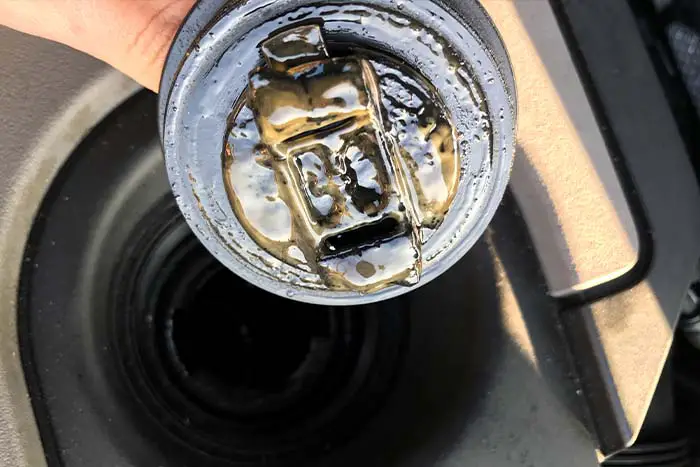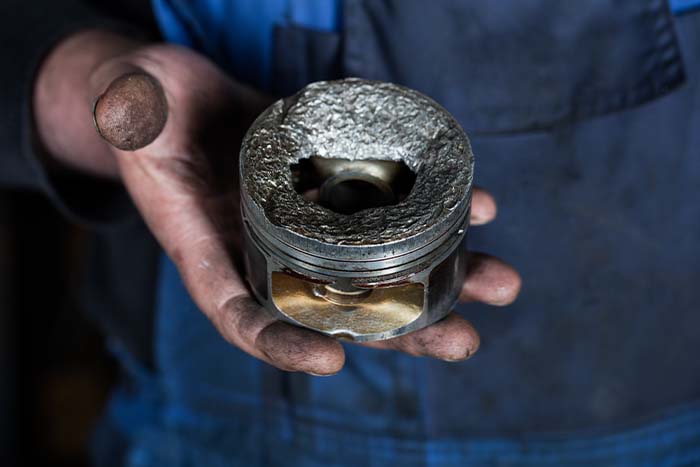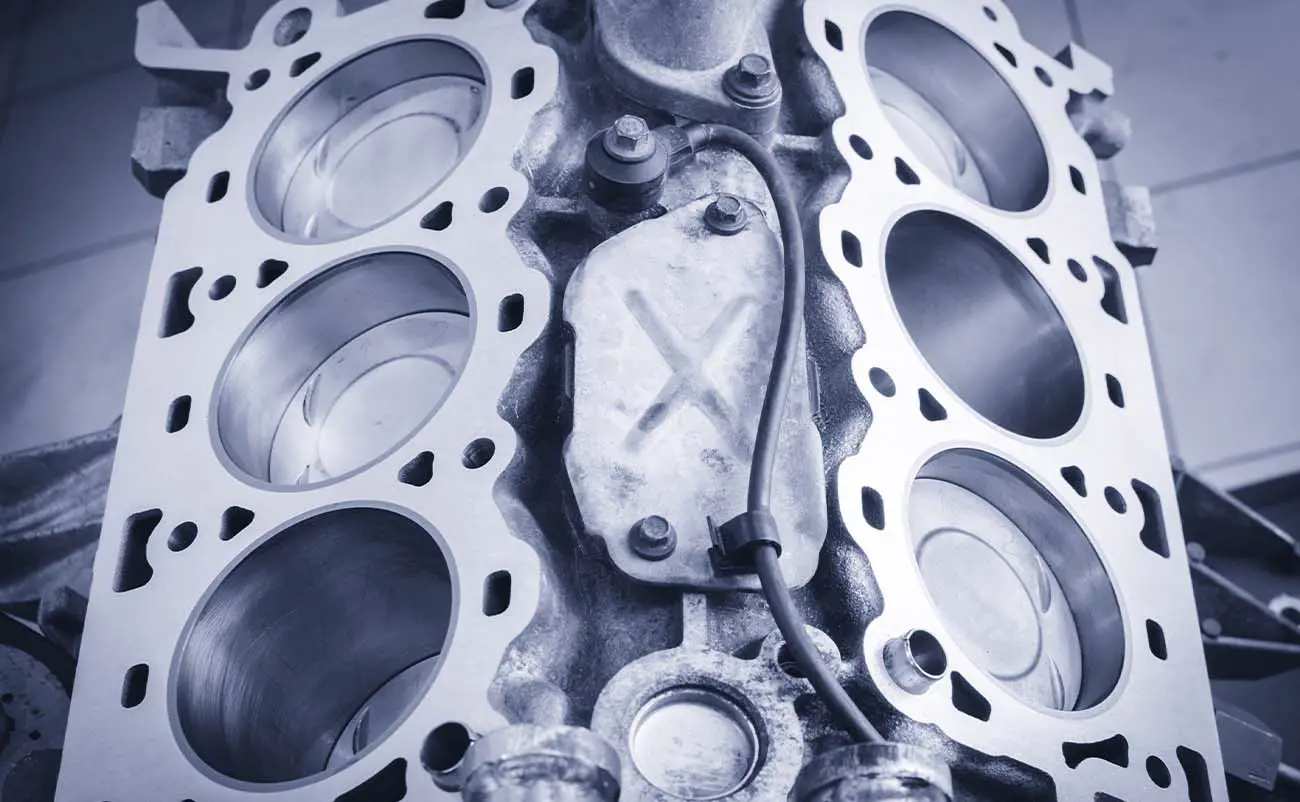The engine is one of the most vital and expensive parts of your car. Without a properly working engine, your vehicle is useless. If the car engine won’t start and run, your car quickly becomes a lawn ornament. To fix it, you will need to rebuild your engine or even get a new engine. Neither of these options is cheap, but a rebuilt engine is usually cheaper than buying a new one. If you suspect that your engine has failed, then keep reading. We will tell you how much you can expect to pay for an engine rebuild, plus give you the symptoms to watch out for that signal your engine is on its way out.
Table of Contents
Average Engine Rebuild Cost
So, how much does it cost to rebuild an engine? The make and model of your vehicle have a large impact on the cost of an engine rebuild. Smaller engines are usually cheaper to rebuild because they require fewer parts and less time in labor. Typically, a four-cylinder engine will be cheaper to rebuild than a V-8. On average, you can expect to pay somewhere between $2,400 to $4,200 to have your engine rebuilt. This is an expensive price tag, but remember that this is a highly complex job.
Rebuilding an engine requires many hours of work from an experienced mechanic. This is not something that the average car owner can tackle on their own. Qualified mechanics usually charge anywhere from $75 to $150 per hour, and rebuilding an engine can take 20 to 30 hours in some cases. The engine must be removed from the vehicle, completely disassembled, cleaned, resurfaced, reassembled, and placed back into the vehicle. Now you can see why the labor costs on this job are so high.
New parts, like gaskets and piston rings, are always required. These are usually part of an engine rebuild kit, and those can be purchased for around $500 in most cases. If the engine has extensive damage, then it might require new valves or new pistons. This adds additional cost to the job as these parts are not included in a standard rebuild kit.
Signs That Your Engine Is Failing

How can you tell if your engine is going downhill? There are several signs that you can watch for that will signal an engine starting to fail. If you notice any of these signs, then you should take as many precautions as possible to try and prevent engine failure. None of these signs are good, and some signal a more imminent failure than others.
— Excessive Oil Consumption
You should always check your engine oil level as part of your routine car maintenance. If you find that the oil level is consistently low, then it could be a sign that your engine is on its last leg. When the piston rings become worn, they allow oil to blow past them and enter the combustion chamber. When this happens, the oil gets burned and exits the exhaust system. As your vehicle burns oil, you will notice that the oil level keeps getting lower and lower. If you have to constantly top off your engine with oil, then you will probably need a rebuild before much longer.
— White Smoke In Exhaust
This symptom has a direct relationship to the one mentioned above. As oil enters the combustion chamber, it gets burned as part of the combustion process. As oil leaks into the combustion chamber, it will also cause your spark plugs to go bad quickly. The burning oil in the chamber creates white smoke or sometimes blue smoke. The smoke then exits the vehicle through the tailpipe. Thick white smoke coming from the tailpipe is often an immediate sign of bad piston rings, and this means that your engine will need to be rebuilt soon.
— Mixing Of Oil And Coolant
Does the coolant in your overflow tank look dark and murky? Or perhaps the oil on your engine dipstick appears to be milky or frothy? This means that your oil and coolant are mixing, and neither of these things is good. You likely have a cracked engine block or a blown head gasket that is causing the mixing of these fluids. A small crack in the block can sometimes be fixed with an engine rebuild, although you might need a total engine replacement in this case. Either way, you will need to take a trip to the mechanic to inspect the vehicle and determine the best way to fix it.
— Rattling Noise When Idling
If you can hear your engine rattling while it idles, then you likely already have severe damage. This usually signals that some internal engine parts have broken. It could also point to a broken timing chain or timing belt. Either way, each time the crankshaft turns, these broken parts are rattling and moving in a way that they should not. Immediately turn off your engine before additional damage is done. You should have your car towed to the auto repair shop, as driving it might cause catastrophic damage.
— Chattering Noise When Accelerating
Perhaps you don’t hear any rattling when idling, but your engine starts chattering as you accelerate. This is probably due to a condition called piston slap. The pistons normally fit very tightly inside the cylinders. Over time, parts wear out, and the pistons begin to have a small amount of wiggle room inside the cylinder walls. When this happens, you will hear the chattering noise as they move inside the engine. You can also hear this type of noise if the pistons and valves touch each other inside the cylinder heads. A broken timing belt or chain can cause this, and it will also cause extensive damage if you run your engine in this condition.
— Engine Won’t Turn Over
Not many things are worse than turning your key in the ignition, and your car won’t start. This could be something as simple as a dead battery or faulty starter motor, but it could also signal a problem that is much worse. If your engine has failed and won’t turn over, then this probably means that internal parts are broken and are preventing the camshaft from spinning. When this happens, you’re going to need a complete engine overhaul, and you will also be paying a towing bill. Go ahead and get your vehicle to the dealership or a repair shop to get those repairs started.
— Low Engine Performance
One reason that you might need a motor rebuild is that your engine has lost compression. This often appears in the form of low engine performance. This can become even more evident in high-performance engines. They often have very high compression ratios, so a loss of compression will affect their performance greatly. As the compression drops, you will find that you need to press the accelerator more to get the same level of performance. The engine might begin to misfire and stall, and eventually, it will shut off altogether.
Engine Rebuild VS. Engine Replacement

So, is rebuilding your engine always an option? Not necessarily. Sometimes, so much damage has been done to your engine that your only choice is to buy a new engine. Rebuilding an engine requires reusing many parts from your old engine. This includes the engine block at a minimum. The block and cylinder heads usually go through a machining process for resurfacing, and new parts like gaskets, rings, and others are put back into the engine. If there is damage to the block that is beyond repair, then purchasing a new engine is often the way to go.
Engine replacement is exactly as it sounds. This engine repair requires the removal of the old engine, and it is replaced with a new engine. Sometimes, you might even decide to purchase a used engine instead of a brand new engine. However, remember that used engines will not come with the same warranty as a new engine. They might not even have as much warranty as a rebuilt engine, so you should weigh the pros and cons of each option before making your final decision.
Cost To Replace An Engine
Engine replacement costs are usually quite expensive. It can range anywhere from $3,500 to $6,000 in most cases. For high-end vehicles, the price can even top $10,000 in some cases. This is due to a couple of reasons.
First, new engines are expensive. Some engines alone are well over $5,000. Plus, replacing an engine still requires many hours of labor. The old engine needs to be removed, and many components from the old engine need to be transferred to the new engine. This may include the water pump, alternator, oil pump, and other items. The labor costs alone for this job can top $3,000 for some vehicles.
If your vehicle has severe engine problems that require the placement of a new engine, then many people opt to get a new car instead. For most, it does not make sense to spend that much money on repair costs for an old car that they will likely trade soon anyway. Instead, they simply buy a new vehicle and sell the old one for parts or scrap.
The Bottom Line
Many people wonder how to rebuild an engine, but rebuilding an engine is not an easy DIY task like an oil change or small repair. Instead, it is a complex job that requires a great deal of skill and many hours of labor. That is why you can expect to pay at least $2,000 to have your engine rebuilt, even for a small four-cylinder motor. If you have any of the symptoms mentioned here, then you might soon have an expensive repair bill.
Frequently Asked Questions
Is a rebuilt engine as good as new?
If the work is performed by a good mechanic, then a rebuilt engine will be nearly as good as new. Most rebuilt engines will come with a warranty, but that warranty usually does not last quite as long as a new engine warranty. Many of the parts on the rebuilt engine will be new, and others have been restored to be like new again.
Is a rebuilt engine better than a used engine?
Yes, a rebuilt engine is usually better than a used engine. With a rebuilt engine, you know that the parts should all be like new again. However, with a used engine, you do not know what you are getting. The previous owner may not have taken care of the engine, and it could already be on the verge of failure.
Does a rebuilt engine need to be broken in?
Most mechanics agree that a rebuilt engine needs to be broken in. For the first 500 miles, you should avoid extremely high RPMs. You should also avoid extended periods of idling the car. The break-in process helps the piston rings seat properly in the grooves of the pistons. This decreases oil blow-by and maximizes compression in the cylinder. Once you’ve hit the 500-mile mark, the rings should be fully seated. You can then drive the vehicle like normal.

